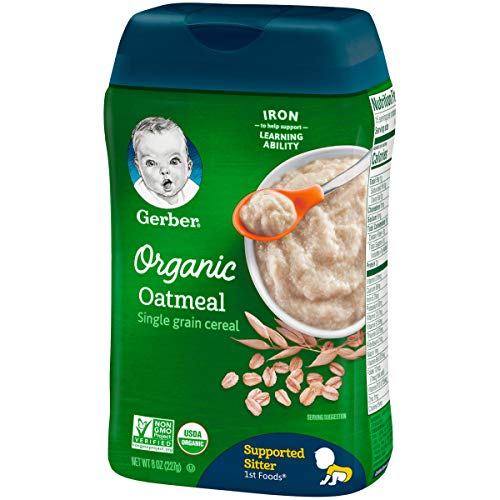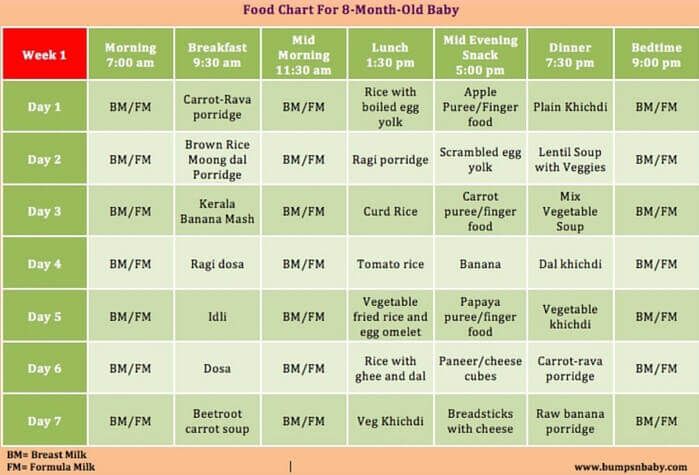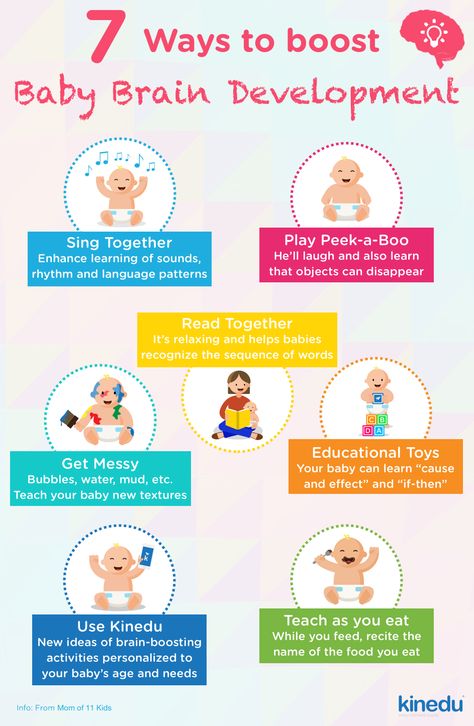Best food for baby in summer
18 Best Cooling Summer Foods for Babies
The weather’s getting hotter and babies crankier! Keep them refreshed inside out with these Cooling Summer Foods for Babies – nutritious and hydrating!
18 Best Cooling Summer Foods for Babies
1. Watermelon
2. Cucumber
3. Coconut Water
4. Yogurt
5. Oranges
6. Tomatoes
7. Pineapple
8. Barley
9. Cumin
10. Mango
11. Muskmelon
12. Bananas
13. Avocado
14. Apples
15. Lauki or Bottlegourd
16. Green Beans
17. Papaya
18. Sabja Seeds
Buy Healthy Nutritious Baby, Toddler food made by our own Doctor Mom !
It’s summer, and depending upon how you look at it, it’s time for sweaty days and dehydration, or for mangoes and ice cream! Whatever the case may be, we adults can always find our own ways to beat the heat, and we can always reach into the fridge and make ourselves a refreshing smoothie or a salad.
Unfortunately, little babies cannot do the same! Yet, they also have to deal with the summer heat, and it is up to us parents to make things comfortable for them, while also ensuring they get everything they need for healthy growth and development.
So what’s the best way to do this? Through food, of course! Breast milk is the number one thing babies can have in summer, since it contains all the nutrients they need along with enough hydration. But as your little one crosses the six month mark, you can expand her diet to include some more cooling summer foods.
Indian summers are harsh, but it also provides us with the right kinds of foods. This means that your best bet is to eat whatever is in season, since they’ll be the most flavorful and nutritious, not to mention less likely to be filled with preservatives and chemicals.
According to Ayurveda, every food has a heating or cooling property, and choosing cooling foods in summer will help keep your baby refreshed inside out.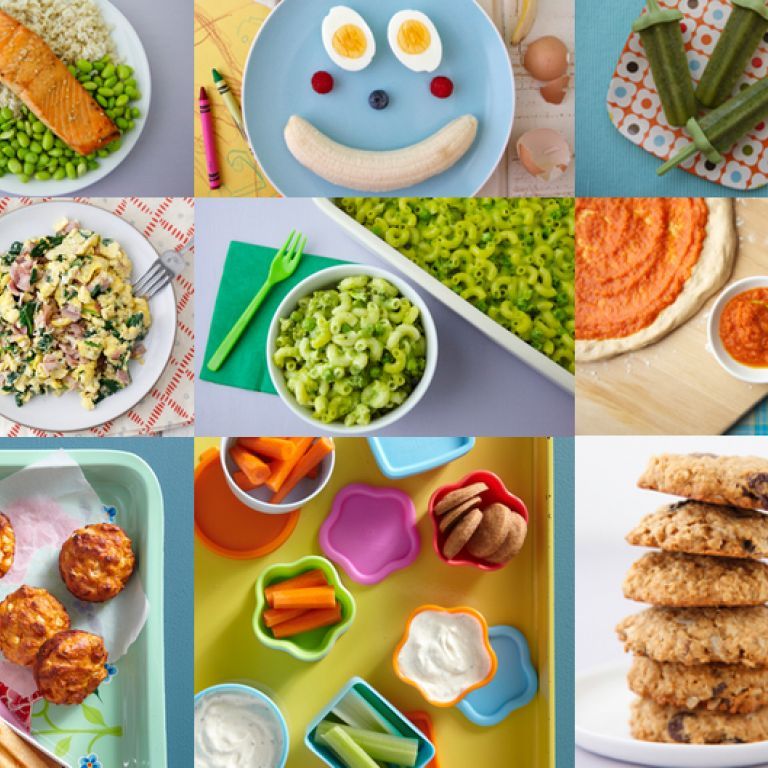 Such foods help the body regulate its temperature and prevent dehydration. Now babies can’t have all of these foods, so we’ve drawn up a list of baby-friendly foods for summer, so you don’t have to worry too much!
Such foods help the body regulate its temperature and prevent dehydration. Now babies can’t have all of these foods, so we’ve drawn up a list of baby-friendly foods for summer, so you don’t have to worry too much!
Important: Breast milk is the best food for babies, and the WHO recommends exclusive breastfeeding till the age of six months and complementary solids after that. The American Academy of Pediatrics (AAP) has revised its solid food guidelines in 2012, which now state that babies older than 6 months can now enjoy most foods without restriction. Yet, we have still listed the appropriate age recommendations for each food listed below. Please consult your pediatrician in case of any doubt.
1. Watermelon
When you think of summer foods, watermelon is sure to come at the top of the list! That’s not surprising, considering they’re made of 92% water. If that isn’t hydrating, I don’t know what is!
Besides the hydrating factor, watermelons also contain lots of vitamins, particularly A and B-complex Vitamins.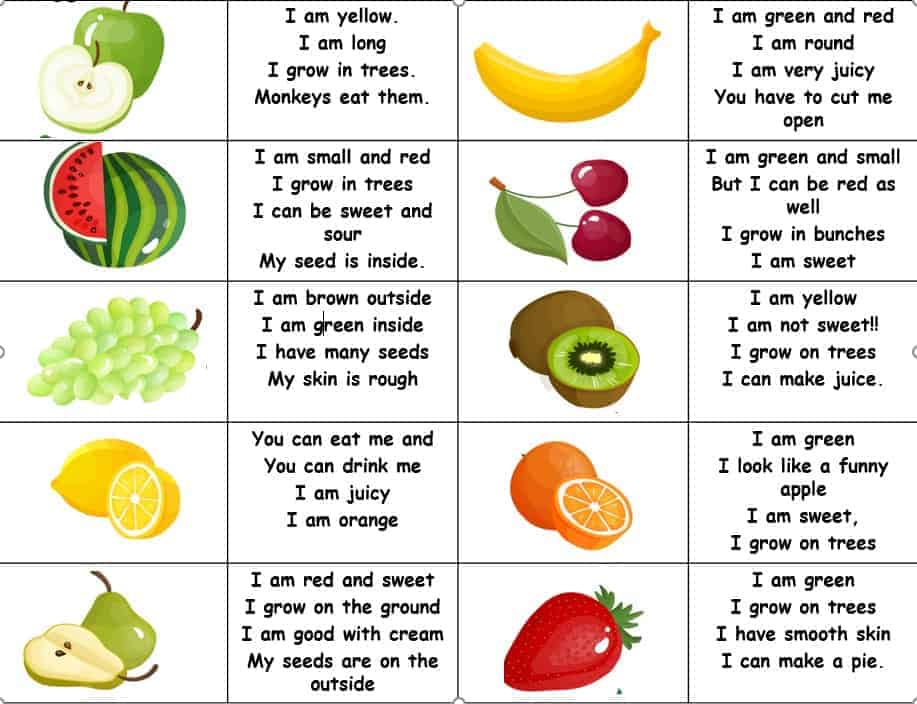 Watermelons are also loaded with antioxidants that help eliminate toxins as well as lycopene which improve skin health.
Watermelons are also loaded with antioxidants that help eliminate toxins as well as lycopene which improve skin health.
It is recommended to introduce watermelons after 8 months of age, since melons may cause allergic reactions in some cases. However, if there is no family history of food allergies or sensitivities, you can introduce watermelons as early as 6 months.
The best way to feed babies watermelon is to cut out the flesh, ensuring there is no trace of the rind in it. Remove all the seeds completely. Now you can mash it into a puree or cut into sticks or chunks and offer as finger food.
Check out more healthy watermelon recipes for babies and kids.
2. Cucumber
Cucumbers are the watermelons of the vegetable section – they’re super popular during summers too! Like watermelons, cucumbers are also over 90% water by weight. Being a diuretic, cucumbers also enable elimination of toxins from the body.
Besides water, cucumbers are rich in B vitamins, flavonoids, electrolytes and lots of fiber, which helps the digestive system run smoothly during summer. It also helps to keep constipation at bay.
It also helps to keep constipation at bay.
According to AAP guidelines, cucumbers can be fed to babies after six months, but some babies experience gassiness from eating cucumbers. If you worry about this, you can introduce cucumbers after the age of 8 months.
It is not advised to cook cucumbers. Instead, you can cut it into chunks or sticks and offer to your baby as finger food. Another option is to grate cucumber and add it to baby’s other meals.
3. Coconut Water
Stand aside, soft drinks and fruit juices, when it comes to the ideal drink for summer, nothing can beat coconut water. Nature’s very own energy drink is packed with electrolytes, which prevent dehydration and nourishes the body in summer.
Coconut water is also rich in potassium, which promotes temperature regulation. Coconut water also cools the body and keeps the digestive system running smoothly. In fact, the electrolytic balance of coconut water is similar to that of human blood.
Coconut water is easily digestible for babies over six months, especially since the lauric acid in it is similar to that of breast milk.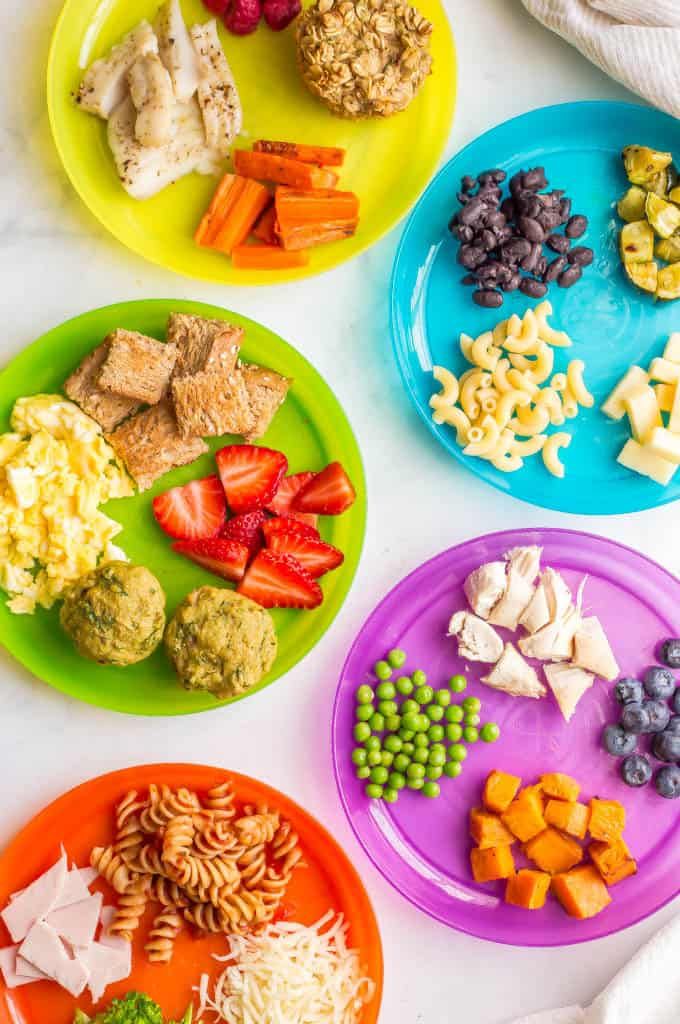 Besides, it is perfectly safe and sterile and does not require any further cooking. It can be offered to baby directly, or it can be used to make baby’s other meals like cereal.
Besides, it is perfectly safe and sterile and does not require any further cooking. It can be offered to baby directly, or it can be used to make baby’s other meals like cereal.
4. Yogurt
Sometimes the solution to certain problems are right in front of our eyes, but we realize this much later! Yogurt or curd is something made in most Indian homes and served with every meal, but it has recently got attention for its probiotic benefits.
The probiotics in yogurt are great for a healthy gut and to keep the digestive system running smoothly, but yogurt is also the perfect cooling summer food. Yogurt gives babies protein, calcium as well as Vitamin D. Probiotics also boost immunity and improves skin along with promoting healthy teeth and bones.
While cow’s milk is not recommended for babies under the age of one, yogurt is an exception since it does not contain lactose like milk does. It is easily digestible for babies and can be introduced as early as six months.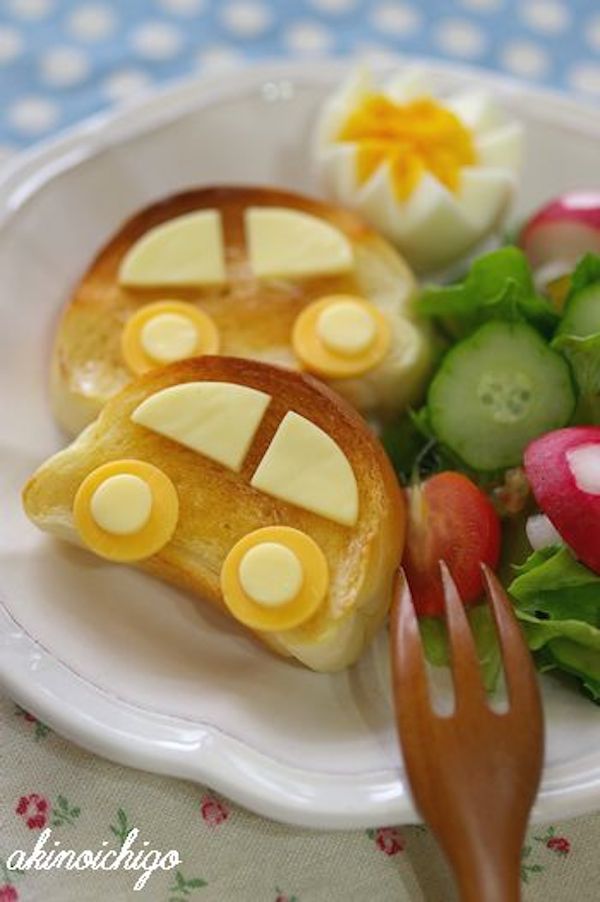 Opt for Homemade Curd over store bought ones.
Opt for Homemade Curd over store bought ones.
You can add it to other meals like Curd Oats Khichdi for Babies and Coriander Curd Khichdi for Babies. You can also combine it with fruit to make Easy Mango Yogurt or Homemade Strawberry Yogurt. You can also make refreshing drinks like a 3-Ingredient Mango Dates Smoothie, Watermelon Smoothie or Ragi Buttermilk.
5. Oranges
For many people, the best way to cool down after a hot day outdoors is a refreshing citrus fruit, particularly oranges! 80% of oranges is water, making this a great pick for hydration. Oranges also promote healthy digestion, which makes the body work less harder, thereby generating less heat.
What’s more, oranges are rich in potassium, a nutrient that’s lost through sweat. Eating potassium-rich foods in summer ensures the muscles stay healthy. Besides potassium, oranges are also rich in Vitamins A and C, calcium, dietary fiber and over 100 phytonutrients which have antioxidant effects.
While the new AAP guidelines don’t advise against oranges for babies over 6 months, many pediatricians recommend waiting till at least 10 months.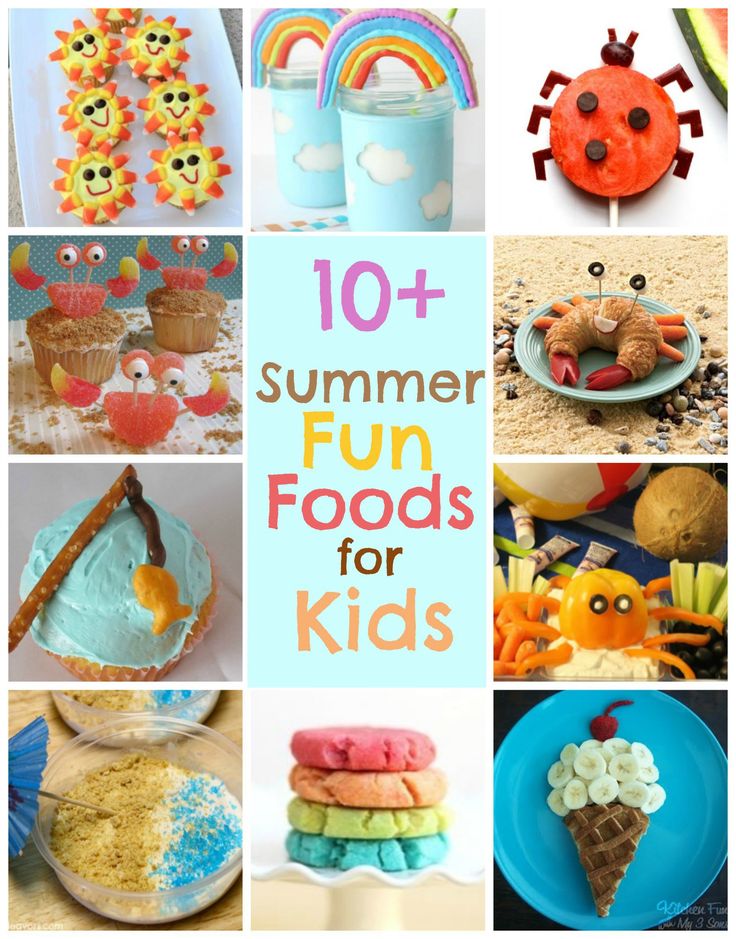 The reason is that citrus fruits contain large amounts of citric acids, which may cause rashes and tummy pains. If your baby is prone to food sensitivities or there is a family history of food allergies, you may want to wait till the baby’s first birthday.
The reason is that citrus fruits contain large amounts of citric acids, which may cause rashes and tummy pains. If your baby is prone to food sensitivities or there is a family history of food allergies, you may want to wait till the baby’s first birthday.
It’s best to give oranges as the fruit itself, by peeling the orange and removing the membranes and seeds from the segments. This ensures the baby gets the pulp too. If you’d like to start out with juice, dilute one part of juice with ten parts of clean water. Stick to just 3-4 ounces of juice a day.
You can also check out more orange recipes for babies and kids.
6. Tomatoes
Technically a fruit but clubbed with vegetables, tomatoes are an unlikely hero among summer superfoods! Tomatoes contain up to 95% water, making it excellent for hydration, but its also an immunity super star.
A medium tomato contains 47% of the RDA of Vitamin C as well as loads of Vitamin A – both essential nutrients for a healthy immune system. Tomatoes are also known for their high concentration of lycopene – an antioxidant that protects against skin diseases.
Tomatoes are also known for their high concentration of lycopene – an antioxidant that protects against skin diseases.
Due to their high acidity, experts recommend introducing tomatoes around 10 months of age. Before that tomatoes may cause rashes or tummy pains, particularly if consumed raw. However, if your baby is comfortable with most other fruits, you can try introducing it around 8 months of age.
Always serve tomatoes cooked, either as a tomato juice or added to babies dishes. You can also make homemade tomato sauce and offer along with other finger foods.
7. Pineapple
This spiky tropical fruit just screams summer, and not without reason! With nearly 88% of the fruit being water, it is a great hydrator and an ideal choice for hot summers. But that’s not all, pineapples are also rich in Vitamin C – even more than oranges!
Pineapples are also known to have anti-inflammatory properties, thanks to an enzyme called bromelain. It is great for skin health and cleanses the body of toxins. Pineapples are also rich in dietary fiber for smooth digestion.
Pineapples are also rich in dietary fiber for smooth digestion.
Pineapples can be given to babies over 6 months of age but if your baby has a sensitive digestive system or a family history of allergies, it’s recommended to wait till the age of one.
Start with a few tablespoons of ripe, juicy pineapple per serving. If it is too hard, you can steam or stew the fruit, taking care there are no tough or fibrous pieces when serving your baby.
You can also check out these healthy pineapple recipes for babies and kids.
8. Barley
When we choose our baby’s first foods, we tend to go by the current popular opinion and forget about traditional super foods. One such food is barley, which often gets ignored when compared to rice or wheat.
Barley is a great food for the summer since it reduces water retention in the body and helps it maintain its natural water balance. According to Ayurveda, barley is considered an ideal summer food, since it is vata-kapha, which means it is cooling in nature.
Barely is an ideal first food for babies and is safe for infants over 6 months since it is easily digestible. In case the baby has a family history of celiac disease or gluten intolerance, you may want to wait for a few months before introducing barley.
The easiest ways to offer barley to babies is via Barley Water or Barley Cereal. You can also check out these 20 Barley Recipes for Babies and Toddlers.
9. Cumin
Giving babies spices may seem odd, all the more so during summer since spices are generally associated with heat. However, this is where cumin, or jeera, stands apart from the rest! Cumin seeds are also known for their ability to help the body regulate heat. Besides, cumin seeds are rich in calcium, iron, potassium and copper.
One of the most well known benefits of cumin seeds is that it aids digestion. This means that less heat is generated in the body towards digestive functioning. The cuminaldehyde in cumin seeds is a compound that activates the digestive enzymes purely by its smell.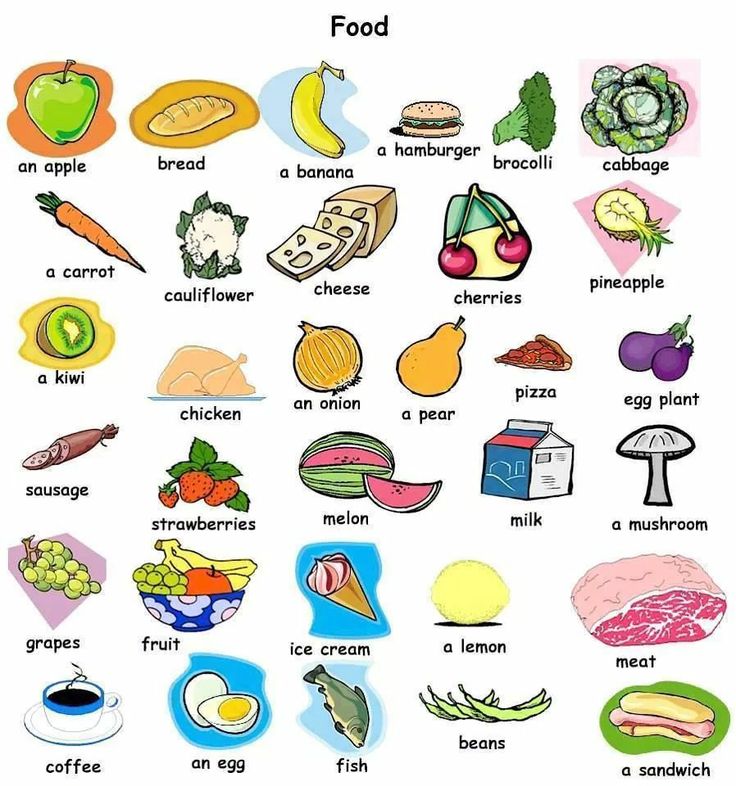
Cumin seeds can be given to babies over 6 months of age. The easiest way to do this is through jeera water, starting with 2-3 teaspoons, 2-3 times a week. Another option is to powder the spice and add it to baby’s food like khichdi or rice.
10. Mango
For an Indian, summer means one thing above everything else – mangoes! The title of ‘King of fruits’ is not a cliche – it is entirely deserving of it. Mangoes are an example of how nature knows exactly what we need in each season.
Approximately 83% of a mango is water. Mangoes are rich in Vitamins A and C, as well as essential minerals like calcium, magnesium and the summer nutrient potassium. Mangoes are also packed with dietary fiber and antioxidants.
Mangoes can be given to babies over 6 months, provided you choose completely ripe mangoes. The mango flesh can be mashed or sliced and fed as finger food. Make sure to remove any coarse fibers beforehand.
Check out more Mango recipes here.
11.
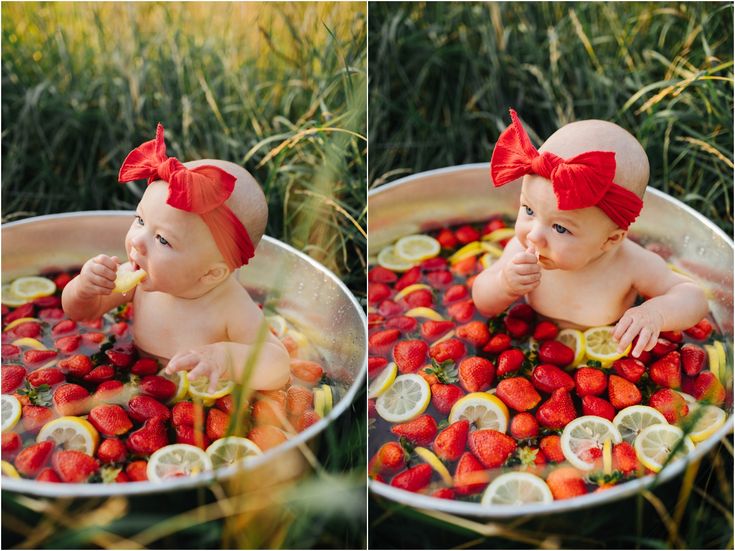 Muskmelon
MuskmelonIf you though watermelons were the perfect summer fruit, you’re missing out on its close cousin – the muskmelon or cantaloupe. With 90% water, this is another fruit that is a great hydrator and perfect for summer.
Muskmelons are a diuretic, which helps the elimination of toxins. They’re also rich in Vitamins A, C, beta carotene and folic acid. Muskmelons are also rich in other minerals like calcium and potassium, preventing fatigue and dehydration in summer.
Muskmelons are safe to for babies 6 months and above. Muskmelons have enough fiber and are easily digestible for infants. They also ensure gut health and boost immunity. Muskmelons can be fed as chunks or slices for finger food, or as a mash.
You can also check out these muskmelon recipes for babies and kids.
12. Bananas
Bananas are among the most popular foods for babies across the world, but many don’t realize that they’re a great summer food too. Bananas are astringent, which enables the body tissues to absorb more water, thus cooling the body.
Probably the most prominent feature of bananas is its potassium content. A medium banana contains a whopping 422 mg of potassium, which prevents dehydration in summer. Being the only tri-segmented fruit in the world, bananas provide energy along with nutrients like Vitamins B6, C, magnesium and antioxidants.
Bananas are ideal for babies over six months since it is easily digestible and very unlikely to cause any allergic reactions. Bananas can be easily mashed without cooking or it can be cut into chunks and offered as finger food. Mashed banana can also be used as a natural sweetener in baby food.
Check out more healthy Banana recipes for babies .
13. Avocado
Avocados are fruits that have occupied prime spots in must have healthy foods across the world, mainly due to the high concentration of healthy fats. Yet few of us know that an avocado is a potassium super food, containing three times the potassium in a banana!
Being the fruit with the highest amount of monosaturated fatty acids, avocadoes promote easily toxin elminiation from the blood and helps cool the body.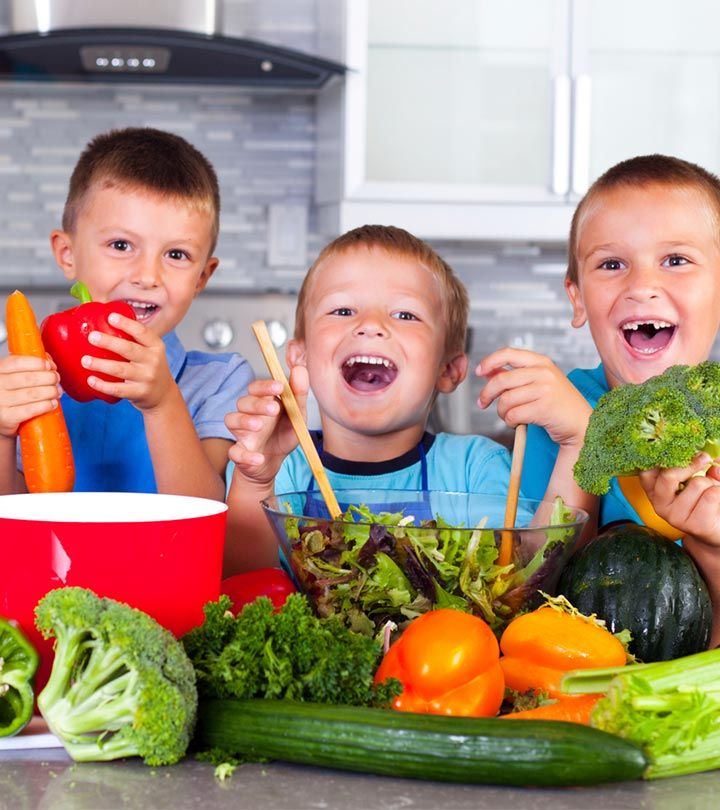 It is easily digestible as well, so the body doesn’t have to work as hard to digest it.
It is easily digestible as well, so the body doesn’t have to work as hard to digest it.
While the healthy fats in avocado are great for brain development in babies, they are also rich in Vitamins B, C, E and K. All these make avocados perfect for babies over 6 months of age. Avocado flesh can be mashed easily when ripe and fed to babies.
Check out these healthy Avocado Recipes for babies.
14. Apples
Have you ever put an apple in water? You’ll notice that it floats, and this is because apples are not as dense as they appear – in fact, they’re 84% water! Now you know why apples are a great summer food!
Apples have a good amount of dietary fiber because of which they promote smooth digestion. It also contains pectin, a soluble fiber that is filling while providing energy. Apples are also rich sources of antioxidants, especially the red variety.
Apples are a popular baby food and can be introduced as early as 6 months. Red apples are better since they’re sweeter. You can either make applesauce for your baby, or offer ripe apples as chunks of finger food. Avoid apple peel as it is difficult to chew, and avoid the seeds since they can be toxic.
You can either make applesauce for your baby, or offer ripe apples as chunks of finger food. Avoid apple peel as it is difficult to chew, and avoid the seeds since they can be toxic.
You can also check out these 30 Apple Recipes for Babies Under One Year.
15. Lauki or Bottlegourd
When you think of fruits or vegetables with a high water content, we tend to think of visibly juicy and watery produce like melons and cucumbers. However, there is another vegetable that offers great hydration – the humble lauki or bottle gourd!
With 96% water content, lauki is an excellent choice for summer. That’s not all, these gourds are rich in Vitamins A, C and folate as well as calcium and magnesium. Bottle gourds also ensures healthy skin and digestion and also promotes better sleep.
Being quite neutral in flavor, bottle gourds are ideal for babies over six months. They also pose a very low risk of allergies and relieve constipation. The easiest way to feed this vegetable is via a puree, either on its own or in combination with other veggies.
16. Green Beans
Green beans are something present in most homes, but few of us would think of them as hydrating vegetables. Whereas the truth is that these beans are nearly 95% water!
The hydration automatically make green beans a good pick for summer. But that’s not all, they also contain large amounts of calcium, manganese and Vitamins A, C and K. These beans are also high in antioxidants and dietary fiber.
Green beans are safe for babies over seven months, but they can cause gassiness in some babies. If your baby gets gassy after eating beans, hold on for some time and try again. A puree is the best way to feed babies green beans. Older babies can have steamed, soft beans as finger food.
17. Papaya
Many homes in India have a papaya tree in their backyard, making this fruit a staple in Indian kitchens. We enjoy both raw and ripe papayas; often without realizing that this is a great summer fruit!
Papayas contain close to 90% water by weight. It also contains an enzyme called papain which promotes digestion so the body doesn’t have to expend more heat to digest it. Papayas also contain an assortment of nutrients so that they’re even used in some traditional medicines.
It also contains an enzyme called papain which promotes digestion so the body doesn’t have to expend more heat to digest it. Papayas also contain an assortment of nutrients so that they’re even used in some traditional medicines.
Papayas are rich in Vitamins A and C as well as folate and beta carotene. Papayas are also rich in plant based antioxidants that prevent diseases. It also prevents inflammation and constipation.
Papayas are great for infants over 7-8 months, after introducing other basic first foods. Ripe papaya flesh can be easily mashed and fed to baby, thanks to its natural sweetness. You can also check out these healthy papaya recipes for babies and kids.
18. Sabja Seeds
Cumin seeds or jeera water is a popular summer drink in India, but there’s another variety of seeds that is also ideal for summer. These are sweet basil seeds, also known as Sabja seeds.
These tiny black seeds resemble chia seeds, but have different nutritional benefits.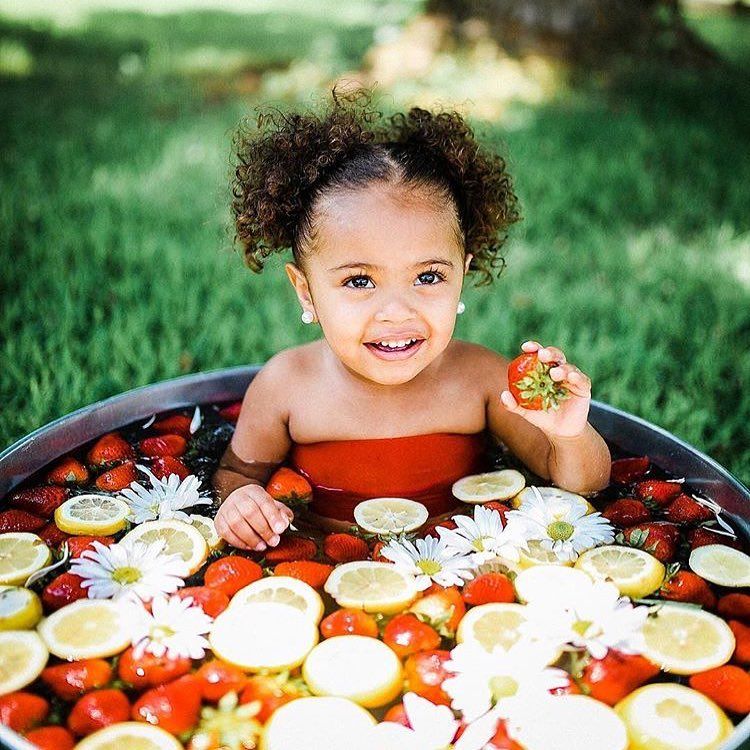 They are rich in protein, iron, calcium, magnesium, omega-3 fatty acids and antioxidants. They are perfect for summer because they help keep the body regulate its temperature by not getting overheated.
They are rich in protein, iron, calcium, magnesium, omega-3 fatty acids and antioxidants. They are perfect for summer because they help keep the body regulate its temperature by not getting overheated.
Sabja seeds can be given to babies over 8 months, but since they can be a choking hazard, some parents prefer to wait till the baby’s past her first birthday. For babies, soak a tablespoon of seeds in a cup of water for 10-15 minutes. Strain the water and feed the baby or use it in baby’s meals.
While not mandatory, it’s better to follow the 3-day rule to be on the safe side, and start with a small quantity in the beginning. If the baby displays symptoms like itchy rashes, abdominal pain, burning sensation in the mouth, swelling of the face or shortness of breath, he needs to be rushed to the doctor right away.
Buy Healthy Nutritious Baby, Toddler food made by our own Doctor Mom !
Shop now!Healthy Summer Foods for Kids and Babies, Cool foods for Summer Season for Children, Summer Diet Plan for Toddlers
With summer foods for kids, keeping your child cool and healthy amidst the rising temperature is not that difficult.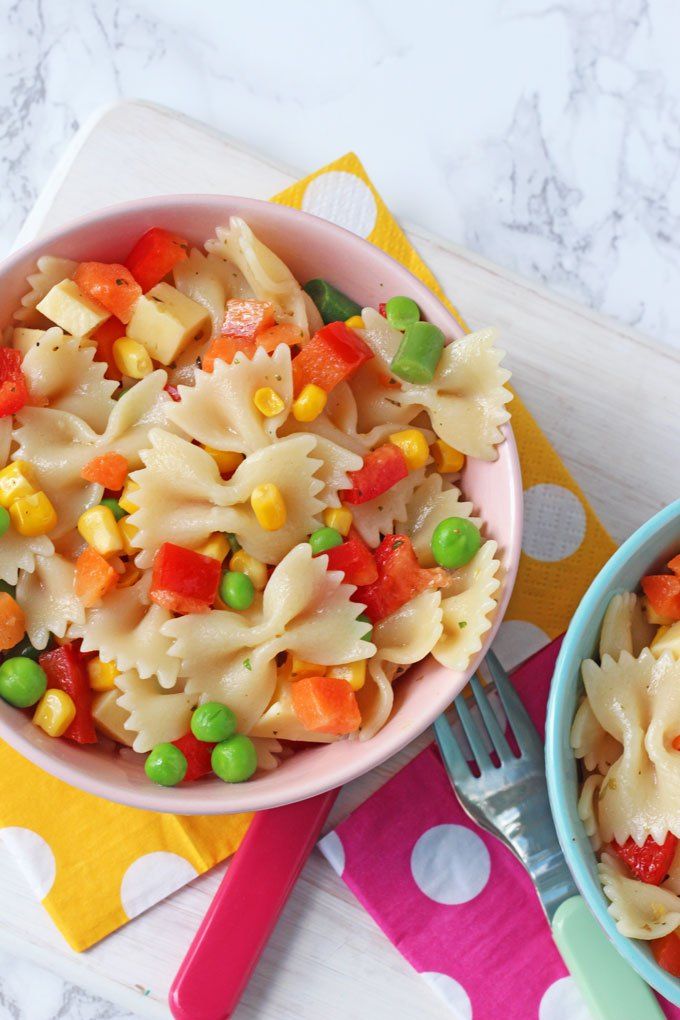 Here is our list of summer foods for kids that your child must have during summer
Here is our list of summer foods for kids that your child must have during summer
The summer season brings with it multiple health issues such as heat stroke, dehydration, heat rashes and sleeplessness. This is the time when most of us prefer to stay indoors and use fans and air conditioners to keep cool. Wearing light-colored and loose clothing made of cotton also helps a lot!
But, how many of us know that certain summer foods can keep our bodies cool and our energy levels stable during summer?
As far as children are concerned, there is a list of summer foods for kids that should be a part of every child's diet. Here are a few fruits, snacks and drinks that can keep your child's body cool and provide nutrition, thus promoting good health.
Summer snacks for toddlers
1. Fermented rice gruel
Also called Kanji or Kanjika or Congee, used to be a popular staple breakfast in East and South India. However, not many have it nowadays. It is consumed with side dishes such as pickles or curry or mixed with buttermilk and salt. Apart from cooling the body, this summer food is also considered to be rich in B6 and B12.
It is consumed with side dishes such as pickles or curry or mixed with buttermilk and salt. Apart from cooling the body, this summer food is also considered to be rich in B6 and B12.
2. Salads
Having a bowl of salad every day in summer can work wonders for health. Salads satiate hunger and are a good source of fiber and low in calories and fats. Including leafy green vegetables such as cabbage, spinach and lettuce in salads are a perfect way to keep your children adequately hydrated during the hot months. These have high water content and are easy on the digestive system. You can browse the Internet for some exciting and healthy salad recipes or come up with your own.
3. Broccoli
This vegetable is not only full of nutrients but also comprises 91% water. So, apart from being delicious and healthy, broccoli also keeps your children hydrated. It is also high in fiber, which aids digestion, prevents constipation and maintains low blood sugar. Broccoli also promotes weight loss and healthy vision. So, go ahead and prepare some healthy broccoli snacks for your children this summer.
So, go ahead and prepare some healthy broccoli snacks for your children this summer.
**Onions: Although not a snack or a drink, adding onions to the daily diet helps keep the body cool. You can add them to curries, dips, salad and raitas. Onions are also rich in quercetin, which is an anti-allergen. Children should be given onions to protect them from sunstroke. Note: To derive maximum benefit, encourage your child to eat onions raw.
Summer drinks for kids
1. Yogurt/curd/buttermilk
Yogurt or curd is a great summer food due to its cooling properties. A staple in most Indian homes, this dairy wonder is also good for the digestive system of a toddler. It is a source of calcium and protein and is loaded with various other nutrients. Buttermilk is easily digestible and is rich in vitamin B12, potassium, calcium, riboflavin and phosphorus.
Note: Children can have yogurt/curd in different ways such as a glass of lassi, buttermilk and raita.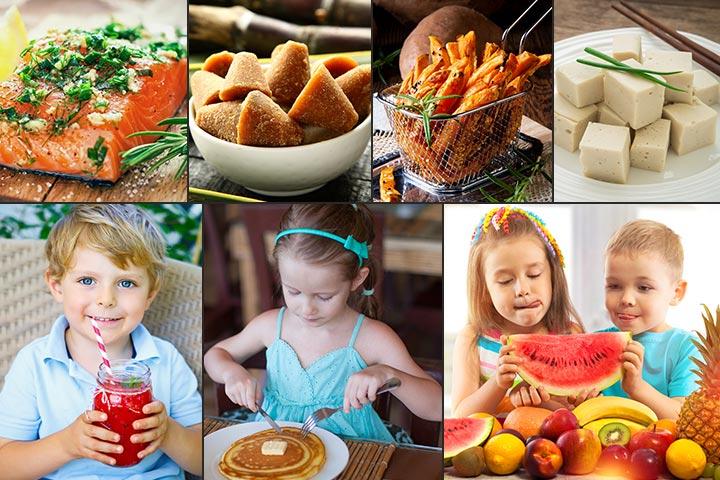
2. Coconut water
Inexpensive, tasty and loaded with nutrients, coconut water is the ultimate thirst quencher for children. Known for its wonderful cooling properties, coconut water is full of simple sugars, electrolytes, and minerals that aid in keeping the body hydrated in the midst of scorching heat.
According to the article, 'The Benefits of Drinking Coconut Water', by Sylvie Tremblay MSC, published in Livestrong.com, coconut water contains a considerable amount of fiber. So, it would keep your little one feeling full for a longer period. The fiber present regulates the blood sugar, thereby making it a healthy choice of drink for toddlers.
3. Vegetable soup
You can make a variety of soups using leafy green vegetables, and your children will love them. Turning vegetarian in summer comes with a host of benefits.
4.
LemonadeApart from being a great summer drink, both for its taste and cooling effect, lemonade can also help in treating indigestion, constipation and dental problems. Lemon water is rich in vitamin C and is good for children's skin too. It can be had sweet, salted, or after adding a pinch of black salt and cumin powder to it.
Lemon water is rich in vitamin C and is good for children's skin too. It can be had sweet, salted, or after adding a pinch of black salt and cumin powder to it.
Found usually at supermarkets and health stores, gulkand is a great food item to have during summer. It prevents acidity and contains cooling ingredients such as rose petals and other herbs that are beneficial for health. It facilitates digestion and reduces the burning sensation in the body caused by heat. Gulkand can be mixed with milk and given to children.
Note: Gulkand is available in bottles at all leading stores.
** Mint: This is a cooling herb that can be added to summer drinks, and other foods as well. A simple, inexpensive and easily available herb, mint helps with digestion. You can try adding mint to curd or make mint juice for your children.
Note: You can grow mint in a small pot at home. It is commonly known as Pudina in India.
It is commonly known as Pudina in India.
6 Fruits you should give your child this summer
Together with consuming summer snacks and drinks, we should also have fruits. Most fruits are low in fat and calories, but high in minerals and vitamins. Also, they are easily digestible, which makes them an ideal source of nutrients for children. With summer fast approaching, here are some fruits that your child would love to have to beat the heat.
1.
OrangeOne of the tastiest fruits enjoyed by individuals of all ages, oranges are a good source of fiber, vitamin C and several other vitamins, and minerals. They are also considered to be a good source of antioxidants.
2.
CucumberDuring summer, when we lose water through perspiration, it is important to ensure that we keep replenishing the fluid lost. Due to their extremely high water content of almost 96%, consuming cucumbers helps us stay hydrated. Also, cucumbers are rich in flavonoids, which, research shows, may help fight cancer.
Also, cucumbers are rich in flavonoids, which, research shows, may help fight cancer.
3.
MuskmelonNot only is muskmelon a delicious fruit but also has a sweet fragrance. Along with having high water content, muskmelons are also rich in vitamin A, beta-carotene, folate and fiber.
4.
Black plum or JamunThese tasty berries are available only during summer, so make sure they aren't missing from your fruit bowl. In Ayurveda, the humble jamun has been described as a fruit having many medicinal benefits. It is considered good for the digestive system as well as for those having diabetes. It also helps in improving oral health by controlling bleeding gums.
5.
WatermelonThis is the ultimate cooling food for children. Not only does watermelon quench the thirst due to its high water content (watermelon contains 92% water), but also keeps the stomach full for long. This fruit is packed with vitamins A, B6 and C, apart from antioxidants and amino acids. It also contains traces of potassium. Children can have watermelon in limited quantities throughout the day to stay hydrated.
This fruit is packed with vitamins A, B6 and C, apart from antioxidants and amino acids. It also contains traces of potassium. Children can have watermelon in limited quantities throughout the day to stay hydrated.
Note: Instead of buying watermelon slices from roadside vendors, it's always safe and hygienic to buy a whole fruit.
6.
TomatoesThe humble tomato provides many benefits, one of which is cooling the body temperature. In fact, tomatoes are 94% water and can help in hydration and the promotion of regular bowel movement. In case your child does not like eating tomatoes, offer tomato juice mixed with honey or tiny slices of tomatoes mixed in the food.
Summer is a wonderful time. It spells out holidays, vacations and FUN! But while having a good time together as a family, ensure to take the right measures to keep your child's body cool this summer. Keep her hydrated with adequate amounts of water and ensure a healthy diet that includes these superfoods.
Child nutrition in summer
In addition, on hot days, the child's body loses significant amounts of minerals and vitamins with sweat. To cover these additional costs, an increase in the caloric content and nutritional value of the children's diet is required. On the other hand, on hot days, children often experience changes in the gastrointestinal0005
intestinal tract - appetite worsens.
How, dear parents, do you organize meals for your child in the summer?
First, the calorie intake should be increased by about 10-15%. To this end, the amount of milk and dairy products should be increased in the child's diet, mainly due to fermented milk drinks and cottage cheese, as sources of the most complete protein.
In summer, the first vegetables should be widely included in the child's diet: radishes, early cabbage, turnips, carrots, beets, beet tops, fresh cucumbers, later - tomatoes, new potatoes, as well as various fresh herbs, both garden and wild: dill, parsley, cilantro, lettuce, green onion, garlic, rhubarb, sorrel, nettle, etc.
The second feature of the child's nutrition in the summer is a more rational organization of the child's diet. In the hot summer months, it is recommended to change the diet so that lunch and afternoon tea are reversed. This mode is more physiological. The fact is that in a particularly hot afternoon, when the child's appetite is sharply reduced, he is offered a lighter diet, consisting mainly of a fermented milk drink, a bun or bread and fruit. He easily copes with such food, after which he is laid down for a daytime sleep. Rested and hungry after a light "snack", the child will happily eat the whole lunch, consisting of the most high-calorie protein-rich dishes.
An increase in the child's daily calorie intake can also be achieved by increasing the nutritional value of breakfast. It is recommended to include any protein-rich dish (meat, fish, cottage cheese, egg). It is also physiologically more justified, since after a night's sleep, in the cool morning, children eat with great appetite.
In summer, in addition to the generally accepted four meals, the child can also be given a fifth meal in the form of a glass of yogurt or milk before bedtime. This is especially rational in the case when dinner is given earlier, and the time for putting the child to sleep at night is somewhat postponed due to the long daylight hours.
In the summer, it is necessary to pay attention to compliance with the drinking regime. On hot days, the body's need for fluid increases significantly. Therefore, it is necessary to always have a supply of fresh boiled water, and even better - rosehip broth, unsweetened compote or juice. Then the possibility of using raw water by the child, especially in suburban conditions, which can create a risk of indigestion, will be excluded.
Drinking raw juices is another step towards health. It is an essential source of vitamins, mineral salts and numerous beneficial trace elements. In many juices with pulp (nectars) there is a lot of pectin, and he. As you know, it has the ability to bind the products of decay and fermentation in the intestines and in this form remove them from the body. This is why nectars can act as "protection" drinks to remove harmful toxic substances from the body.
Dear fathers and mothers, remember:
Carrot juice contributes to the normalization of metabolism, improving the processes of hematopoiesis and oxygen transport, stimulates physical and mental development.
Beetroot juice - normalizes neuromuscular excitation during stress, dilates blood vessels.
Tomato juice - normalizes the work of the stomach and intestines, improves heart activity, contains a lot of vitamin C.
Banana juice - a lot of vitamin C.
Apple juice - strengthens the cardiovascular system, normalizes metabolism, improves blood formation.
Grape juice - has a tonic, bactericidal, diuretic, laxative effect, helps to lower blood pressure.
Here are some summer recipes for children:
1. Radish Salad with Green Onions
Red radish, de-leafed, white radish, washed thoroughly, boiled over, cut into slices, mixed with finely chopped green onion , add, season with vegetable oil. (Radish 50g, green onion 10g. vegetable oil 4g)
2. Green cabbage soup
Sort the sorrel and young nettle, wash thoroughly, pour over with boiling water, drain the water, pass the leaves through a meat grinder. Put finely chopped potatoes into the boiling broth, cook until tender, 10-15 minutes before the end of cooking, add prepared sorrel and nettle, onion sautéed in butter. Serve with a swept, finely chopped hard-boiled egg. (Sorrel 40g, potato 30g, onion 10g, butter 5g, sour cream 10g, egg 1/3 pc., greens 5g)
3. Rhubarb kissel
Rhubarb peeled, washed, cut into pieces, boiled in water until soft, rub through a sieve. Add sugar, bring to a boil, pour in the potato flour diluted in cold water while stirring, bring to a boil again and immediately sow from the heat. (Rhubarb 40g, sugar 15g, potato flour 6g)
Child's summer food
Habitual way of life and schedule change with the arrival of summer heat, the intensity of metabolic processes changes, taste preferences are transformed. Children begin to abandon their usual lunches and dinners, switching to lighter meals. However, many parents begin to worry - will the child have enough if there are no usual ones - “first, second and compote”. Nutrition issues become especially important for children of the first three years, their digestion is still very sensitive to various changes. How to properly feed a baby in summer? You need to remember the ten basic rules of summer nutrition.
The first rule is to change the usual menu.
In summer, due to the increase in external temperature, metabolism changes - calories are spent not on maintaining body temperature, but on cooling it. Children are very mobile and their metabolism is especially intensive, large amounts of water are lost with the evaporation of moisture from the surface of the body, and along with it, salt. In addition, the child also needs proteins to build the body, on average about 4 grams per kilogram of body weight, especially of animal origin.
However, in hot weather, children are reluctant to eat meat products, so if a child refuses to eat their usual meals, it is necessary to find a worthy replacement for them. Children are more active in consuming milk and dairy products, and they act as a source of complete proteins. You can add egg yolk, cheese or cottage cheese to them. Due to these products, even if the child refuses to eat meat at all or is reluctant, it is possible to replenish protein reserves.
Despite the heat, there should be enough fat in the child's diet, however, the share of vegetable fats in the total percentage increases significantly - these are vegetable oils as salad dressing or vegetable stew. Fats are also found in dairy products, precisely because of the need for a regular intake of fats, the child is not given low-fat dairy products. Fats in the summer are actively involved in protecting the skin from the harmful effects of ultraviolet radiation, help the synthesis of vitamin D and K, give a feeling of satiety and energy.
But an excess of carbohydrates in the summer will not be useful if a child is given a lot of buns and sweets, due to changes in metabolic processes, he will experience a deficiency of vitamins and protein. Carbohydrates, of course, must be present in the child's diet, but the vast majority of them should be complex carbohydrates - starch (from cereals) and glycogen (from offal). But the sugar of sweets, cookies or their sugar bowls, it is desirable to minimize, replacing it with sweet fruits and berries.
During the summer heat, the consumption of vitamins rises sharply. Therefore, the child needs to actively replenish them. Therefore, fresh fruits and vegetables, berries should be present in the diet of children every day, on average, a child needs to eat up to 250 g of them at the age of up to one and a half years, and up to 300 g at the age of up to three years.
The second rule is to change meals.
Due to changes in temperature, there is a shift in the child's food intake. It is better to shift the intake of high-calorie and satisfying foods during the heat to the morning or late evening hours. When the heat recedes and the body can easily digest dense nutrition. Therefore, if the baby gets up early, feed him more heartily - you can give him a cereal, meat or fish dish, give milk and a bun, cookies for a second breakfast.
At lunch time, in the heat of the day, focus on light foods — cool fermented milk dishes (yogurt, kefir, cottage cheese) or vegetable or fruit purees. If it is more convenient for a child to have a snack in small portions, let him eat bananas and apples, drink juices, eat bagels, bread and cookies. And most importantly, the child needs to drink plenty of fluids.
In the evening, after the heat subsides, you can offer your child a more solid meal - vegetable or meat soup, cereals, vegetable purees with meat.
At night, you can give your child milk or fermented milk products - kefir, yogurt or biolact.
The third rule is that we prepare dishes in a special way in the summer.
In the summer, all baby food changes, including the way food is prepared, so that the food is digested in the best possible way. For babies who are just being introduced to complementary foods, it is possible to offer the use of not canned food, but home-made products, since the abundance of locally produced fruits and vegetables allows this. If possible, this should be boiling. Steaming and stewing. For older children, you can cook light soups, but postpone overcooking for the summer, they are more difficult to digest during the heat period.
In addition, food spoils quickly in hot weather. Therefore, the best option would be to cook food at once, in small portions, so that leftover food is not stored. It is very important for all children that foods retain most of the vitamins, therefore, even the smallest are recommended to gradually introduce fresh berries and fruits from their area. However, for children under three years old, all fruits and berries are thoroughly washed and then poured with boiling water (this is the prevention of intestinal infections and helminthiasis).
Fourth rule — choose the assortment of summer products for children.
No matter how much parents would like to diversify the baby's menu with various delicacies, it is necessary to remember that the body of a child up to three years is still very immature, and the digestion of food is not yet fully carried out, not all enzyme systems have fully matured. Therefore, many summer foods that parents consume should not be given to babies.
So, for example, okroshka is considered a traditional dish of the summer table, however, it contains products that are not good for children. Babies should not use sausage at an early age, which is part of okroshka, as it is a product with an abundance of preservatives, dyes and other chemicals, and is also very fatty. Kvass, despite all its naturalness, also cannot be classified as children's products. It is a product of fermentation, and in the intestines of the child causes increased motility and flatulence with diarrhea.
Dairy products become another difficult issue of summer nutrition, parents want to amuse their kids and feed them goodies - they are given ice cream and adult dairy products. But, unfortunately, these are absolutely not children's products, ice cream contains a lot of fat and artificial additives, and adult dairy products are not adapted in terms of fat and mineral components. In addition, these products are an excellent environment for, which leads to the development of intestinal infections and admission to the hospital.
Rule five - we strictly follow the rules.
All children's products, especially in summer, when they can quickly deteriorate, must be bought only following sanitary rules. Milk and dairy products must be stored in refrigerators with a temperature of 2 to 4 degrees Celsius until the time of purchase. You can not buy milk and dairy products for babies in markets and stalls where there are no refrigerators. Especially if they were bottled in plastic bottles from other products. You should not take milk from neighbors in the country or in villages, it can be dangerous in terms of diseases.
When buying, carefully check the expiration dates of the products and the integrity of the packaging, if they cause you doubts, it is better not to buy this product at all. In the summer, do not store open jars and dairy products even in a refrigerator. In heat, changes in products that are dangerous to the health of the baby occur within an hour, in a refrigerator - in 6-10 hours.
Rule six - don't forget about hygiene.
In summer, intestinal infections and helminthic infestations become the main danger. The main way to get them is to lick dirty hands, eat sand, take a sip of water from a river or lake, eat an unwashed apple, or drink infected milk. Therefore, parents with a vengeance need to monitor the hygiene of the hands and body of the baby. After each walk and visit to the toilet, it is necessary to wash the child's hands with soap and wash his face. On a walk, if it is impossible to wash your hands, make sure that the child does not pull their mouth, does not lick toys and does not eat with dirty hands. If the baby asks to eat outside, you must first clean his hands with antibacterial baby wipes and try to choose foods for a snack with which hands do not directly contact - a banana in a peel, cookies in a package for which the baby will hold food and bite. For very young children, prepare food in a hermetically sealed container and a clean spoon.
If the baby is still sucking on the pacifier and has dropped it, do not lick or wipe it with tissues and give it to the baby. It is necessary to replace the pacifier with a new, sterile one, and thoroughly rinse and sterilize the fallen one at home.
Thoroughly wash all fresh fruits, berries and vegetables under running water with a brush, and for children under three years of age, it is recommended to pour boiling water over them (if they are berries) or remove the peel from large fruits.
The seventh rule is to be reasonable.
Of course, while it's summer outside, I want to pamper my child with all kinds of fresh fruits, vegetables and berries. But, it is worth remembering that children's digestion is still very delicate, and you should not give your child a lot of fresh fruits at once. First of all, if the child eats these products for the first time. Especially colorful or exotic fruits and berries are always at risk of developing allergies or food intolerances. Therefore, initially you need to give the baby a small piece or a couple of berries for testing, and wait a day. If there is no rash or digestive discomfort, you can give a little more of this product.
However, it is worth remembering that fresh fruits and berries can greatly weaken. They contain a lot of fruit acids that irritate digestion and fiber that stimulates peristalsis. Therefore, limit the intake of these products - it is better to give a glass of raspberries in several doses than to allow the child to eat it in one sitting.
Eighth rule - choose drinks.
The best option is baby water, in which the amount of salts is balanced. You can drink baby water without any treatment, it is already ready for use. If you choose ordinary mineral table water, it should only be without gas. Ordinary water from a well or tap must be carefully filtered and boiled.
Young children, on average up to 2-3 years old, can be given special children's granulated teas - they contain vitamins and minerals, are easy to prepare and taste good. If you make tea yourself, it should be very weak, and preferably without sugar. It can be used no more than 2 times a day, in the morning and afternoon.
After a year, you can give your child juice half-diluted with water, or compotes made from fruits and berries with a minimum addition of sugar.
Rule nine - we form the correct drinking regimen.
In order for a child to feel good, a correct drinking regime is necessary. Then there will be no excess fluid loss with sweating and dehydration will not occur. Drinks for children are given cool - about 18-20 degrees, and for children up to a year - about 25-27 degrees. The most effective way to quench your thirst is to drink fractionally at the rate of 50 ml per kg of body weight per day, that is, on average, you need to drink a third of a glass of liquid every hour.
It would be most correct to give the child enough water in the morning. This will create a water reserve in the body, but during the heat, you need to give a drink only when the baby wants to drink, and do not give him too much to drink at once. It is useful to drink the liquid slowly, in small sips. In the evening, as the heat subsides, you can again drink more actively.
If the child is busy with active activities - running, jumping, playing in the air, constantly, every half an hour, offer him a little drink. During activity, the child loses twice as much moisture with evaporation than under normal conditions.
Tenth rule - we organize meals on trips and picnics.
In the summer, families, including those with small children, go on picnics and nature, go to summer cottages. During these trips, babies need to be fed properly to avoid poisoning and indigestion. First of all, you need to know that up to three years of age, foods usually consumed by adults at picnics - sausages, kebabs, barbecues and others, should not be given to children. They are too heavy and will cause indigestion.
For a child, it will be necessary to think over the food - if it is dairy products, they can deteriorate in the heat, so you can take them with you only if you have a cooler bag. The same applies to homemade dishes. On the road, it is better to take a simple and affordable snack - fruit or vegetable puree in a jar, juices in bags or bottles, buns or cookies, something that you can have a snack easily and simply. You can also take fruits with you, you just need to wash them thoroughly at home, and on the road, do not forget to wash your child’s hands beforehand.


